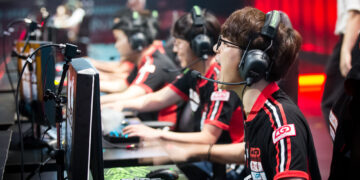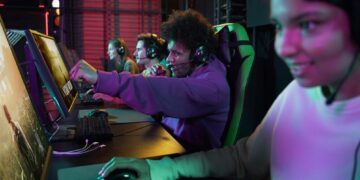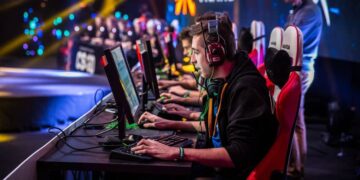God of War is easily one of the best games to release in 2018. The latest entry in the long-running series has players take on the role of Kratos, a Spartan warrior who finds himself banished from his home and forced to search for the meaning of vengeance.
In the new game, you’ll battle against brutal Norse gods known as Æsir. In other words, take on their wrath. With that being said, don’t mistake this game as just another hack-and-slash action title with a Norse setting. This is an incredibly deep experience that gives players insight into one of the most iconic myths that have captured our imagination for thousands of years – Ragnarök.
God of War: A brief explanation of the game’s lore

Like in previous games, the storyline of God of War takes us back in time to the ancient Nordic world. The game starts with Kratos being banished from his home for killing his wife and children. He then roams the sea in search of the meaning of life, which is the driving force of the game’s story.
Along the way, he uncovers the long-forgotten Norse mythology and discovers the truth behind the events that lead to his banishment. As Kratos looks for answers, he’ll face down the wrath of the Norse gods.
Of course, each of these gods has been forgotten by the humans of the time, but not Kratos. The Spartan hero has a thirst for vengeance that he’s determined to quench, even if it means facing down the gods.
What is God of War?
God of War is an action-adventure video game developed by Santa Monica Studio and published by Sony Interactive Entertainment. The game is the sixth installment in the God of War series, which follows the character Kratos. Kratos has been waging a war against the Greek pantheon for thousands of years. However, after being betrayed by Zeus, he is banished for his crimes.
Now, Kratos must seek revenge against the Olympian gods and their champions. This includes beings such as the Incredible Hulk, Thor, and Loki. The game follows Kratos as he seeks vengeance on the Norse gods, in a new story that bridges the gap between the first and second games. While previous games took place in Ancient Greece and Sparta, the new game is set in Norse mythology.
This is due to the fact that no one was left alive to tell the story of these gods to the people of Greece and Sparta, meaning they have been forgotten over time.
God of War: The Characters
In God of War, you play as Kratos, who is banished from his home after killing his wife and children. After many years of wandering, he ends up in Norse mythology, where he begins his search for vengeance. Throughout the game, you’ll encounter a number of characters, including Atreus, Kratos’s son. Atreus is the young man who helps Kratos on his quest for vengeance.
The game’s antagonists include Loki, who is known for his trickery. You’ll also meet other Norse gods and their champions, such as the Incredible Hulk, Thor, and Heimdall. As you travel through the game’s world, you’ll come across a number of side quests that give you the option of recruiting characters.
Although these side quests can be completed at any time, there is a certain level of narrative benefit if you complete them when you first meet the NPC. For example, completing a side quest that allows you to recruit Kuzi will allow you to unlock the power of fire for Kratos when you reach the level that gives you that ability.
The Story of God of War: Ragnarök
The most intriguing aspect of the God of War series is that the game teases a long-forgotten story – Ragnarök. We know very little about this event, and we certainly don’t know the details of it. However, the developers have teased that this new game is a „bridge between the last game and the next.” This has led many players to speculate that Ragnarök is the game’s next story.
For now, this remains speculation, but there are several hints that this is the case. For one, the name of the game is „Ragnarök” in Norse, which is a poetic word meaning „the end of the world.” Second, the game tells a story that bridges the gap between the old and new Norse gods.
Finally, the game is set in Norse mythology, before it gets forgotten. This means that it takes place between the events of the game’s first and second installments when the gods were still widely known and worshipped.
Gameplay Mechanics in God of War

As you’d expect from any God of War game, the gameplay mechanics in this entry are very similar to the previous titles. You’ll be using a number of weapons, from axes to swords to spears, and you’ll be able to upgrade their damage and attack range.
These weapons can be combined to create new ones, which helps you keep on top of the game’s combo system. In addition to these traditional weapons, you’ll also be able to wield a number of Norse items, such as axes, hammers, and shields.
Moreover, you’ll be able to bring up a map of the world and use it to find the nearby side quests. These range from killing a certain number of enemies to finding a specific object. You’ll be able to easily switch between each weapon and item by pressing the square button.
Evie – The Main Character
In God of War, you’ll play the character Evie, who is the daughter of the Celtic god Dagoth. Dagoth is the father of Dagda (the Norse god known for being a prankster), and Dagda eventually banished Evie from his realm.
When Kratos lands in the world of the dead, he takes her as his companion. She helps guide Kratos through the game’s Norse mythology and is even able to summon a number of Dagda’s magical creatures. It’s worth noting that Dagda is a Celtic god, and Dagoth is a deity from Norse mythology. For this reason, many fans believe that Evie is actually a demigod or a human of mixed heritage.
World Map and Side Quests
As with the previous games, you’ll have the option of exploring the world map in God of War. Doing this will give you access to additional side quests, which can be completed at any time. In doing so, you’ll gain access to a new area or get a new item. These quests are similar to the side quests in previous games, in that they range from killing a certain number of enemies to finding a specific object.























